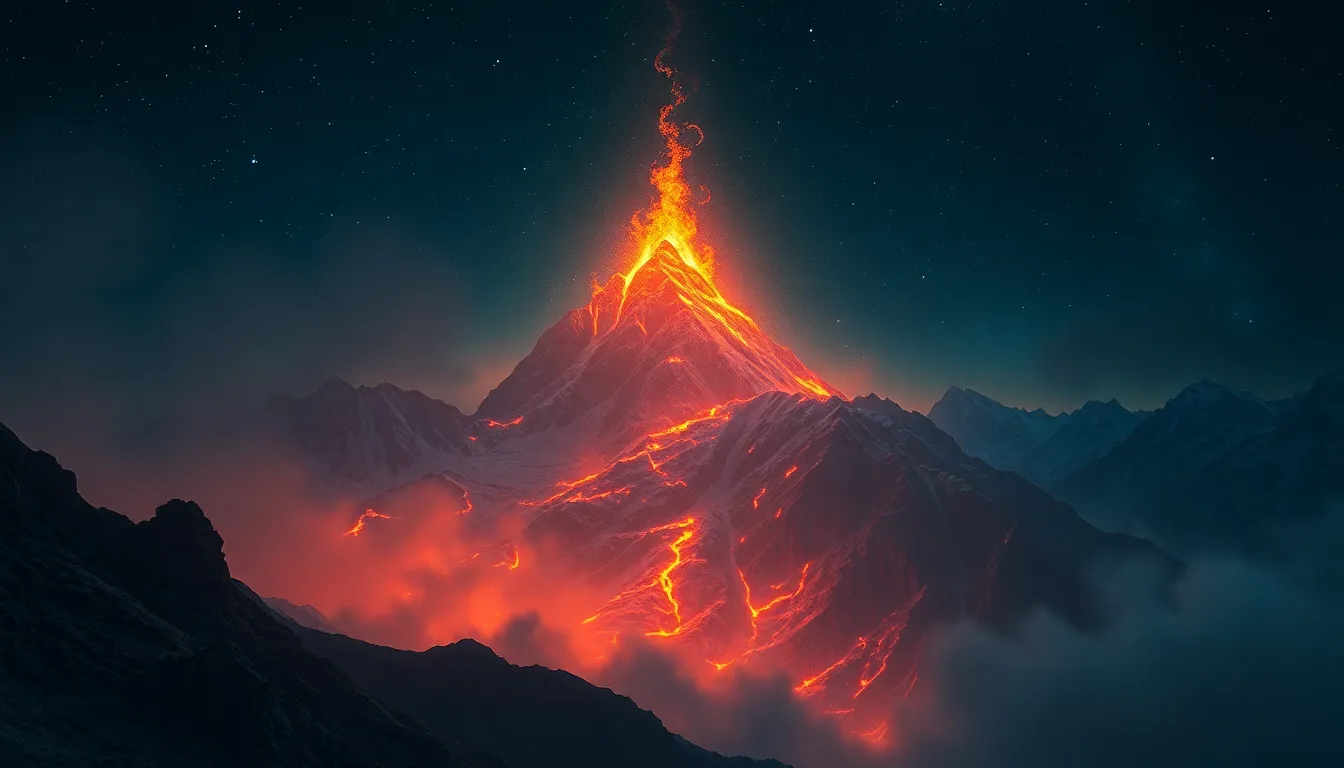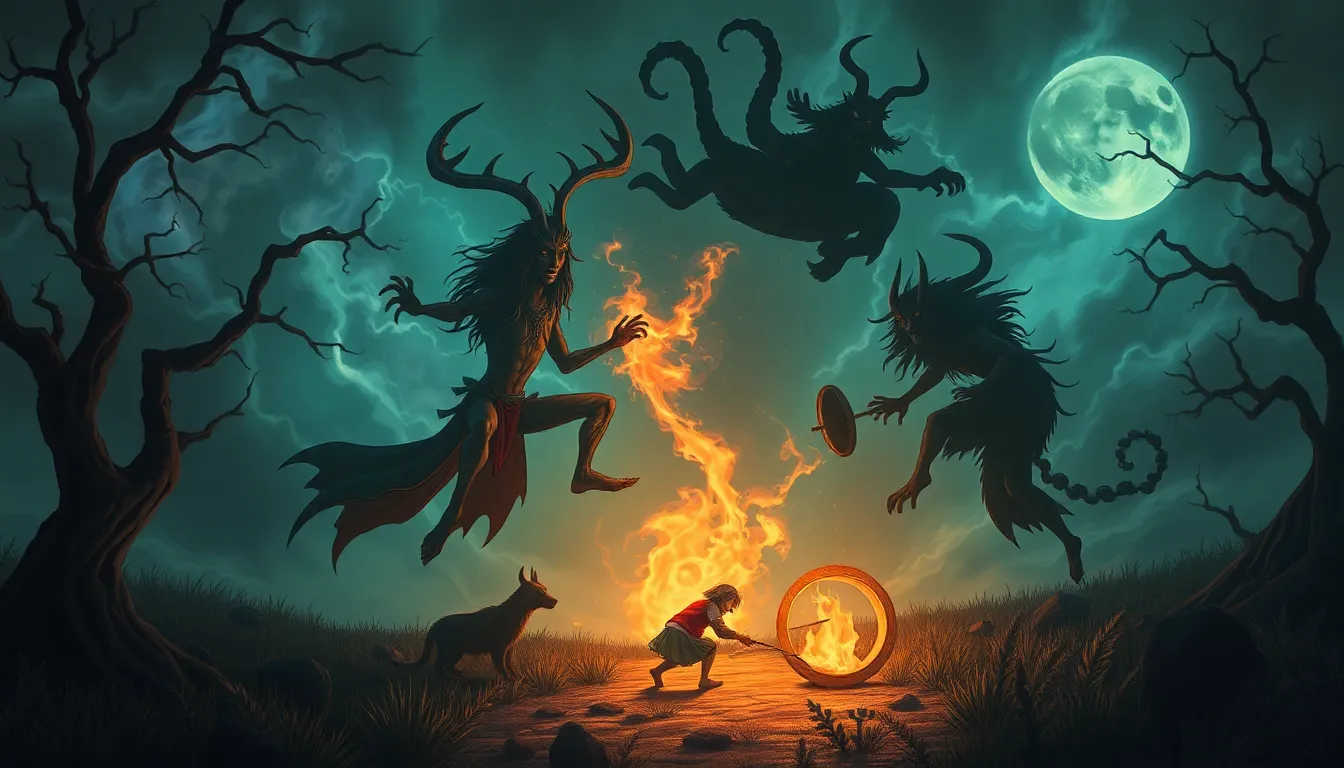The Mountain of the Eternal Flame: Myths of Everlasting Light
1. Introduction to the Mountain of the Eternal Flame
The concept of everlasting light has fascinated humanity across various cultures and epochs. From ancient civilizations to modern spiritual practices, the idea that light can endure eternally resonates deeply within the human psyche. Myths surrounding the Mountain of the Eternal Flame symbolize not only physical light but also the metaphorical illumination of knowledge, hope, and divinity. This article explores the rich tapestry of stories and beliefs surrounding this enigmatic mountain.
2. Historical Context of the Mountain
The Mountain of the Eternal Flame is often associated with specific geographical locations known for their unique characteristics. While the exact location varies in different narratives, it is frequently described as a high, imposing peak that emits a natural light or flame. Its geographical significance is underscored by its role as a landmark for ancient travelers and as a site of pilgrimage.
Historical references to the mountain appear in various ancient texts and folklore. Many cultures have legends that describe the mountain as a sacred place where the earthly and the divine intersect. For example, some versions of the myth place the mountain in the Caucasus region, where natural gas ignitions create flames that seem to burn eternally.
3. Cultural Interpretations of Everlasting Light
Different cultures interpret the concept of eternal light in unique ways. Here are some notable examples:
- Greek Mythology: In ancient Greece, the sun was personified by the god Helios, who was believed to bring light and life. The eternal flame could be seen as a representation of divine enlightenment.
- Norse Mythology: The Norse viewed light as a symbol of purity and strength. The eternal flame was often associated with the gods, indicating their everlasting presence.
- Indigenous Tribes: Many Indigenous peoples have their own stories of sacred fires that burn continuously, symbolizing the connection between the earth and the spirit world.
The comparison of these myths reveals a common theme: light serves as a bridge between the tangible world and the spiritual realm.
4. The Science Behind Eternal Flames
While myths and legends provide a rich narrative, there are also scientific explanations for phenomena that resemble the concept of eternal flames. Natural occurrences can lead to the creation of flames that appear to burn indefinitely:
- Natural Gas Seepage: Some locations, like the famous “Eternal Flame Falls” in New York, have natural gas leaks that ignite, creating a small, continuous flame.
- Geothermal Activity: In areas with volcanic activity, gases and heat can create unique geological features that emit light and flame.
These real-world examples help ground the myth of the Mountain of the Eternal Flame in observable phenomena, bridging the gap between myth and reality.
5. The Symbolism of Light in Mythology
Light has traditionally been a powerful symbol in mythology, representing hope, purity, and divine presence. In many cultures, light is seen as a force that dispels darkness, both literally and metaphorically. Some key aspects of this symbolism include:
- Hope: Light signifies hope in times of despair, often depicted as a guiding force leading individuals out of darkness.
- Purity: In many traditions, light is associated with purity and the divine, symbolizing the untainted nature of the gods.
- Divine Presence: Many myths emphasize the presence of gods as beings of light, reinforcing the idea that divinity is associated with illumination.
Case studies of various myths highlight how light plays a crucial role in the narrative structure and moral lessons imparted through storytelling.
6. The Role of the Mountain in Spiritual Practices
The Mountain of the Eternal Flame has also been a significant site for various spiritual practices. Pilgrimage to such locations is often seen as a journey of enlightenment and connection to the divine:
- Pilgrimage: Many cultures have established routes leading to the mountain, where devotees seek spiritual renewal and enlightenment.
- Rituals: Ceremonies often involve lighting candles or small flames at the base of the mountain, symbolizing the human connection to the eternal flame.
These practices create a communal experience that reinforces the cultural significance of the mountain in the spiritual lives of individuals.
7. The Mountain in Literature and Art
The Mountain of the Eternal Flame has inspired countless artistic representations throughout history. From paintings to poetry, the imagery of an everlasting flame serves as a powerful symbol. Notable influences include:
- Literature: Authors often use the mountain as a metaphor for challenges and enlightenment, exploring themes of perseverance and the search for truth.
- Art: Artists depict the mountain in various styles, capturing its majesty and the ethereal quality of the eternal flame.
These representations reflect the enduring fascination with the myth and its relevance to human experience.
8. Modern Interpretations and Relevance
In contemporary society, the Mountain of the Eternal Flame continues to resonate. Modern interpretations often adapt the myth to reflect current issues and values:
- Spirituality: Many people seek the eternal flame as a metaphor for personal enlightenment and spiritual growth in a fast-paced world.
- Environmentalism: The mountain serves as a symbol for environmental conservation, reminding us of our responsibility to protect natural wonders.
This relevance highlights the timeless nature of the myth and its ability to adapt to new contexts.
9. Challenges Facing the Mountain of the Eternal Flame
Despite its enduring significance, the Mountain of the Eternal Flame faces various challenges:
- Environmental Threats: Climate change and industrialization pose risks to the natural landscapes that inspire these myths.
- Cultural Preservation: As societies evolve, there is a risk of losing the stories and practices associated with the mountain.
Efforts to conserve both the physical and cultural aspects of the mountain are essential to maintaining its legacy.
10. Conclusion: The Enduring Legacy of the Mountain of the Eternal Flame
In conclusion, the Mountain of the Eternal Flame embodies the human quest for understanding and connection to the divine. Its myths and stories persist in today’s world, reflecting our ongoing fascination with the concept of everlasting light. As we navigate the complexities of modern life, the symbolism of the eternal flame continues to inspire hope and resilience, reminding us of the light that exists within and around us.




